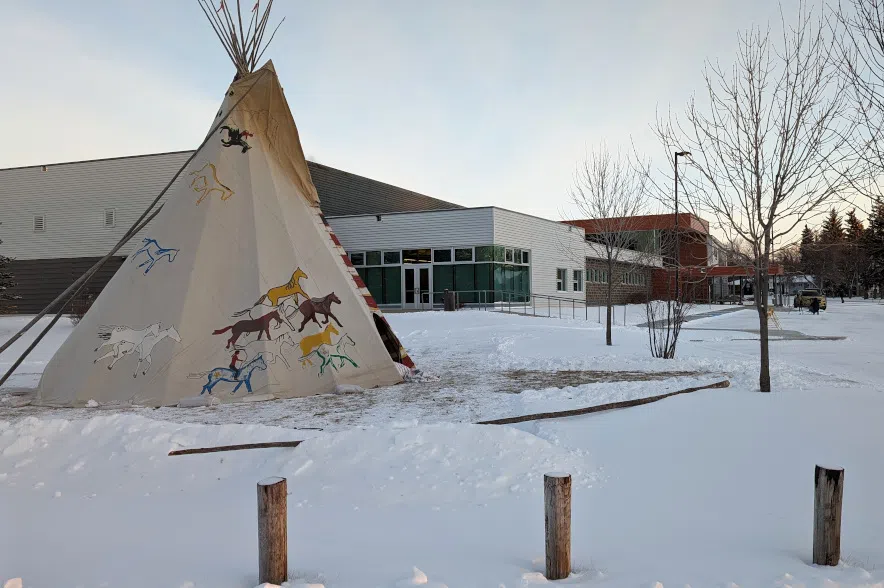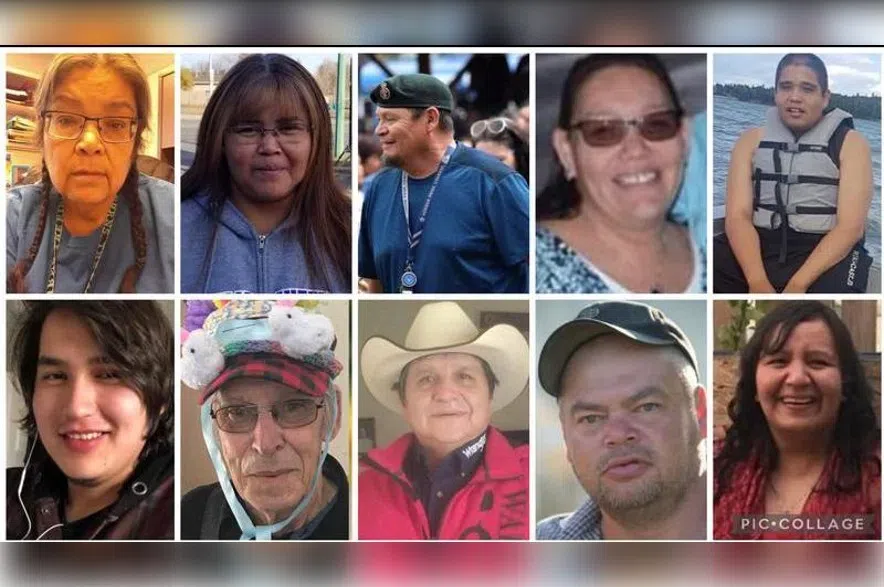A matrix now used by police to rank offenders who are wanted on warrants or who are unlawfully at large wouldn’t have included Myles Sanderson among the most wanted people in Saskatchewan before Sept. 4, 2022.
But after the killings on the James Smith Cree Nation and in Weldon, Sanderson would have been at the top of the list.
A coroner’s inquest that began last week at the Kerry Vickar Centre in Melfort is examining Sanderson’s stabbing rampage, which left 11 people dead and 17 others injured.
On Monday, Staff Sgt. Ryan How of the RCMP’s Saskatchewan Enforcement and Response Team (SERT) told the inquest that with Sanderson’s criminal record — and when he was unlawfully at large before the killings — he would have scored 105 points on the matrix.
How said that total wasn’t remarkable, noting Sanderson wouldn’t even have been among the 60 most wanted people in the province at the time.
But when Sanderson was on the run after the incident, he would have scored 28,000 points on the matrix. The highest person on the list right now in Saskatchewan has 5,145 points.
There are four tiers in the matrix, with the scoring system ranking from five points for some offences to 1,000 points for the most violent offences.
How, SERT’s regional manager for the northern area of Saskatchewan, said the matrix was put in place in October of 2022.
As of Monday morning, How said, there are 63 offenders in Saskatchewan who have more than 100 points and 18 who have more than 1,000.
READ MORE:
- Day 1: Jury selection, first witness at James Smith Cree Nation inquest
- Day 2: Emotions intensify as testimony continues at JSCN inquest
- Day 3: RCMP witness at JSCN inquest discusses drug trade, warrants
- Day 4: RCMP witness apologizes to veteran’s family at JSCN inquest
- Day 5: Psychologist shares assessment of Myles Sanderson at JSCN inquest
SERT went to the points system after the mass murder. Sanderson was unlawfully at large under the old system, which looked at criteria like gang association and violent history, but it was changed quickly after the new crime suppression teams were established in 2022.
How testified there typically are between 40 and 50 offenders who are unlawfully at large in Saskatchewan at any one time. Their offences are normally non-violent in nature, for things like not keeping in touch with their parole officers.
When it comes to warrants, How said they’re requested by police for offences for which an individual has been charged but not arrested. SERT proactively ranks all of the individuals with warrants issued by the RCMP within the province.
In the JSCN situation, How said Sanderson had been released to Saskatoon police and was supposed to live in that city. The RCMP didn’t know he had left Saskatoon, didn’t know he was unlawfully at large and didn’t know he was a threat, so SERT didn’t search for him.
How added that had the Mounties encountered Sanderson before the killings, they would have been able to find the warrant out of Saskatoon and perhaps could have arrested him on that warrant.
However, that presumes the RCMP could have identified Sanderson. How explained that suspects who are wanted on warrants typically provide police with a false name and others then vouch for the person.
Asked if an electronic GPS monitoring system could have helped keep track of Sanderson, How said the system only went live in Saskatchewan in October, replacing the previous model of ankle monitors and bracelets.
As of this month, SERT has nine operational enforcement teams in the province, with eight investigators per team. The teams’ goal is to respond to gangs and crime in Saskatchewan by anticipating violence and deploying to stop it, and also to assist RCMP detachments around the province when needed.
How pointed to a situation in Prince Albert last fall where there was a spike in gang violence. After being contacted by RCMP detachment commanders, six teams deployed quickly to the area and identified six offenders who were the most responsible.
Within six weeks, How said, the teams were able to arrest the six suspects.
Testimony offers details from highway patrol, medical worker
The second week of the inquest began with testimony from the Saskatchewan Highway Patrol and an emergency medical worker.
Alex Heron, an inspector with the Saskatchewan Highway Patrol, offered an overview of how provincial protective services assisted with the RCMP’s investigation and response to the attacks. That response included 53 officers over a six-day period.
He said it’s the most significant event the force had ever been called to assist the Mounties with, and said there was no precedent for the scale of the mass killing.
Heron said provincial officers responded immediately, and helped clear buildings, provided hospital security and followed up on reports of suspect sightings. They also provided ATVs and helped guide RCMP officers who weren’t as familiar with the area.
The next witness was Sherri Jule, director chief of emergency medical services for Saskatchewan’s north zone, who oversees 21 ambulance services in the province.
Jule spoke about the paramedic response to the mass killing, which she said consisted of 10 EMS crews, including all three STARS helicopters in Saskatchewan.
The 10 victims of the mass killing on the James Smith Cree Nation in 2022. The RCMP later revealed that Damien Sanderson, originally a suspect, was also a victim. (RCMP/Submitted)
She described how the dozens of calls for ambulances were received and handled, along with the organization and triage process used by paramedics during the mass casualty situation, which included grouping patients into five colour-coded categories.
The need for help was so great that Jule said ambulances were often used to transport multiple patients at the same time in order to get the injured to the hospital as quickly as possible.
Sixteen people were transported to hospital by paramedics, she said, and all of them survived their injuries.
She said many ambulance services answered the call on Sept. 4, 2022, and while there were safety concerns while paramedics were en route to the Cree Nation, she said the strong police presence alleviated those worries.
The inquest is expected to hear from many more witnesses this week, including a forensic pathologist who will detail the cause of death for each of the 11 victims.
At the conclusion of the inquiry, the jury will have a chance to table recommendations to prevent similar incidents from happening in the future.
— With files from 980 CJME’s Lisa Schick












